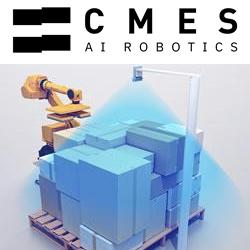2020 FIRST Robotics Kickoff Event Returns to Rocket City Jan. 4
The event, to be held in the Davidson Center for Space Exploration, is hosted by the U.S. Space & Rocket Center and supported by NASA's Marshall Space Flight Center in Huntsville. Members of the local news media are invited to attend.
More than 260 students are expected to attend the 2020 FIRST Robotics kickoff event Jan. 4, starting 8:30 a.m. at the U.S. Space & Rocket Center in Huntsville, Alabama. The event, to be held in the Davidson Center for Space Exploration, is hosted by the U.S. Space & Rocket Center and supported by NASA's Marshall Space Flight Center in Huntsville. Members of the local news media are invited to attend.
FIRST Robotics is a national robotics competition for students in grades 9-12. Teams are challenged to raise funds, design a team brand, hone teamwork skills and build and program industrial-sized robots to play a difficult field game against competitors. Currently 19 teams from Alabama, Tennessee and Kentucky are registered to attend this kickoff, while hundreds of teams are registered to compete nationwide.
The kickoff event will include a game reveal and animation, FIRST Robotics staff and team interviews, a field walk through this year's game course and a live Q&A. Media are encouraged to speak to representatives of NASA, the U.S. Space & Rocket Center and FIRST Robotics staff and team members.
Each year, the FIRST Robotics game is changed, adding new levels of complexity to challenge students. Once teams learn of the requirements for this year's game, they will pick up a "Kit of Parts" and have six weeks to build, design and test a functioning robot. If successful, they can compete in district and regional competitions throughout the nation in March and April to qualify for the national championship, which will be held in Houston April 15-18 and/or Detroit April 29- May 2.
FIRST, which stands for "For Inspiration and Recognition of Science and Technology," is a national organization founded in 1989 by inventor Dean Kamen in Manchester, New Hampshire, to inspire young people to pursue careers in the STEM fields of science, technology, engineering and math. NASA's Science Mission Directorate coordinates and supports FIRST activities for the agency. NASA and its Robotics Alliance Project provide grants for high school teams and support for FIRST Robotics competitions around the country to address the critical national shortage in these career fields. This educational event is a collaborative effort between Marshall, the U.S. Space & Rocket Center and the National Space Club of Huntsville.
News media interested in covering the event should contact Pat Ammons at the U.S. Space & Rocket Center at 256-721-5429; or Todd Cannon of the Marshall Office of Communications at 256-544-3939 no later than 4 p.m. Friday, Jan. 3.
For more information about FIRST programs and competitions, visit:
http://www.firstinspires.org/
For more information about the Marshall Space Flight Center, visit:
http://www.nasa.gov/centers/marshall
For more information about the U.S. Space & Rocket Center, visit:
http://rocketcenter.com/
Featured Product

